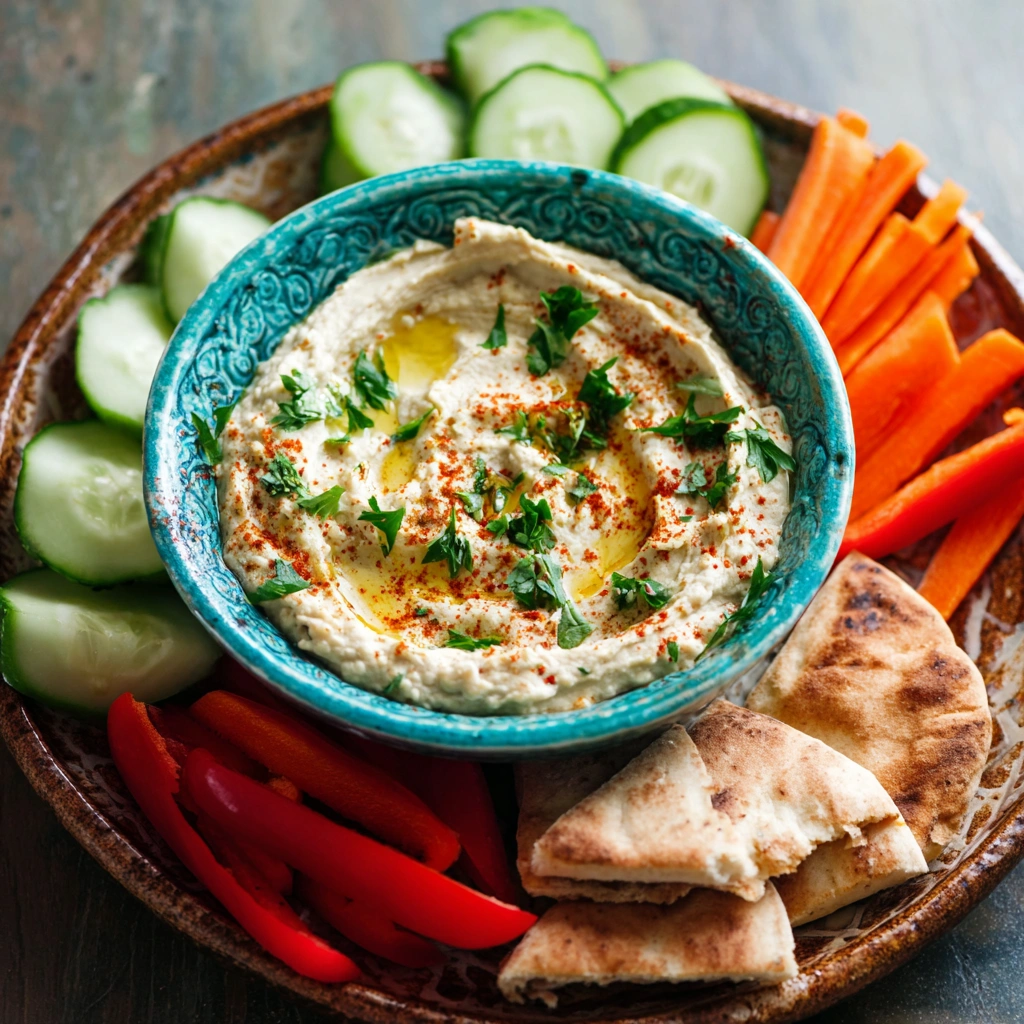Baba Ganoush is one of those timeless Mediterranean dishes that never goes out of style. Creamy, smoky, and incredibly satisfying, this eggplant dip has become a global favorite, whether served as an appetizer, side dish, or part of a mezze platter. But not all baba ganoush recipes are created equal. If you’ve ever wondered how to make an epic baba ganoush—one that’s silky smooth, deeply flavored, and absolutely addictive—you’re in the right place.
In this article, we’ll dive deep into the origins of baba ganoush, explore the essential ingredients, show you different methods for roasting eggplants, and give you a foolproof step-by-step recipe. You’ll also find expert tips, creative variations, serving ideas, nutritional benefits, and answers to common questions. By the end, you’ll not only master the authentic preparation but also understand how to adapt this dish to your personal taste.
What is Baba Ganoush?
The Origins of Baba Ganoush
Baba Ganoush has its roots in the Levant, a region that spans parts of Lebanon, Syria, Palestine, and Jordan. The name itself loosely translates to “pampered father,” though the true origin of the term is debated. What’s certain is that this dish has been prepared for centuries, celebrated for its ability to transform a humble vegetable—the eggplant—into a luscious, flavorful dip.
Traditionally, baba ganoush is made by charring eggplants until the skin is blackened and the flesh takes on a smoky, tender texture. The softened eggplant is then mashed or blended with tahini, garlic, lemon juice, and olive oil. Some variations include yogurt, pomegranate seeds, or herbs, but the foundation remains the same: smoke-kissed eggplant and nutty tahini.
Baba Ganoush vs. Hummus: Key Differences
At first glance, baba ganoush and hummus may seem similar. Both are Middle Eastern dips, both creamy, and both often paired with pita bread. However, there are key differences:
- Base ingredient: Hummus is chickpea-based, while baba ganoush is eggplant-based.
- Flavor profile: Baba ganoush is smoky and earthy; hummus is nutty and savory.
- Nutritional values: Baba ganoush is usually lower in calories and carbs.
Understanding these differences will help you appreciate baba ganoush as its own star, not just hummus’s cousin.
Ingredients for an Epic Baba Ganoush Recipe
Choosing the Right Eggplants
The star of baba ganoush is eggplant, and choosing the right one makes a big difference. Look for:
- Medium-sized eggplants (too large can be bitter, too small may lack flesh).
- Smooth, glossy skin with no bruises.
- Firm texture, not too soft.
Globe eggplants are commonly used, but slender Japanese eggplants can also work for a milder flavor.
Other Essential Ingredients
While eggplant is the base, other ingredients build the complexity of flavor:
- Tahini: Provides nuttiness and creaminess. Use a high-quality, smooth tahini.
- Garlic: Adds pungency. Roast it alongside eggplants for milder flavor.
- Lemon Juice: Brightens the dip with acidity.
- Olive Oil: Enhances richness and smoothness.
- Salt: Balances and intensifies flavors.
Optional add-ins: cumin, smoked paprika, fresh parsley, or chili flakes for extra kick.
How to Roast Eggplant for Smoky Flavor
Oven Roasting Method
If you don’t have access to a grill or open flame, roasting in the oven is the simplest method. Place whole eggplants on a baking sheet, prick them with a fork, and roast at 450°F until the skin is charred and the flesh is soft—about 35–40 minutes.
Grilling Eggplant for Extra Smokiness
For that authentic smoky taste, grilling is ideal. Place eggplants directly on a hot grill, turning occasionally until the skin blisters and blackens. This process takes 20–25 minutes and infuses the flesh with irresistible smokiness.
Step-by-Step Recipe for Epic Baba Ganoush
Preparation Steps
- Roast or grill eggplants until charred and tender.
- Let them cool slightly, then peel away the skin.
- Scoop the soft flesh into a strainer to remove excess liquid (important for creamy texture).
Blending and Seasoning the Dip
- Place eggplant flesh in a food processor.
- Add tahini, garlic, lemon juice, salt, and olive oil.
- Blend until smooth and creamy.
- Taste and adjust seasoning—more lemon for brightness, more tahini for nuttiness, or more olive oil for silkiness.

Pro Tips for the Perfect Baba Ganoush
How to Get the Right Creamy Texture
- Drain excess moisture after roasting to avoid a watery dip.
- Blend in a food processor instead of mashing for smoother results.
- Add olive oil slowly while blending to emulsify the dip.
Balancing Smokiness and Freshness
- Don’t over-char the eggplant, or bitterness can develop.
- Add fresh parsley or mint for balance.
- A sprinkle of smoked paprika can intensify smokiness if desired.
Variations of Baba Ganoush
Spicy Baba Ganoush with Chili
For heat lovers, blend in roasted red chilies or a pinch of cayenne pepper. This adds a bold kick without overshadowing the smoky eggplant flavor.
Herb-Infused Baba Ganoush
Try folding in finely chopped parsley, cilantro, or mint for a fresh, vibrant twist. This version pairs beautifully with grilled meats.
Serving Suggestions
Pairing Baba Ganoush with Bread and Vegetables
Traditionally, baba ganoush is served with warm pita bread. But you can also dip fresh vegetables like cucumber, carrot, or bell pepper slices for a healthier option.
Including Baba Ganoush in a Mezze Platter
For a true Mediterranean experience, pair baba ganoush with hummus, olives, tabbouleh, and falafel on a large platter. This makes an impressive spread for parties or family dinners.
Nutritional Value of Baba Ganoush
Calories and Macronutrients
On average, a 2-tablespoon serving contains:
- 70 calories
- 2g protein
- 5g fat
- 4g carbs
Health Benefits of Key Ingredients
- Eggplant: Rich in antioxidants and fiber.
- Tahini: High in healthy fats and minerals.
- Olive Oil: Supports heart health.
- Garlic: Known for immune-boosting properties.
Together, these make baba ganoush a nutrient-dense snack that’s both satisfying and healthy.
Common Mistakes to Avoid When Making Baba Ganoush
Over-roasting or Under-roasting Eggplant
Eggplant must be cooked until tender and smoky. Undercooked eggplants result in a bitter, chewy dip, while overcooking can make it mushy and burnt.
Using Too Much or Too Little Tahini
Too much tahini overwhelms the eggplant flavor, while too little leaves the dip bland. Start small and adjust gradually.
FAQs
Can you make baba ganoush without tahini?
Yes, though tahini provides creaminess. Greek yogurt or almond butter can be substitutes.
How long does baba ganoush last in the fridge?
Stored in an airtight container, it stays fresh for up to 5 days.
Can you freeze baba ganoush?
Yes, freeze in portions for up to 2 months, but expect some texture change.
Is baba ganoush healthier than hummus?
Both are healthy, but baba ganoush tends to be lower in calories and carbs.
What is the best way to serve baba ganoush?
With pita bread, fresh vegetables, or as part of a mezze platter.
How can you make baba ganoush creamier?
Add extra olive oil or blend longer until silky smooth.
Conclusion
Epic Baba Ganoush is more than just an appetizer—it’s a flavorful celebration of smoky eggplant, nutty tahini, and zesty lemon. By mastering roasting techniques, balancing flavors, and experimenting with variations, you’ll create a dip that’s versatile, healthy, and unforgettable. Whether served as part of a mezze spread or as a simple snack, baba ganoush is the Mediterranean dip that never disappoints.

